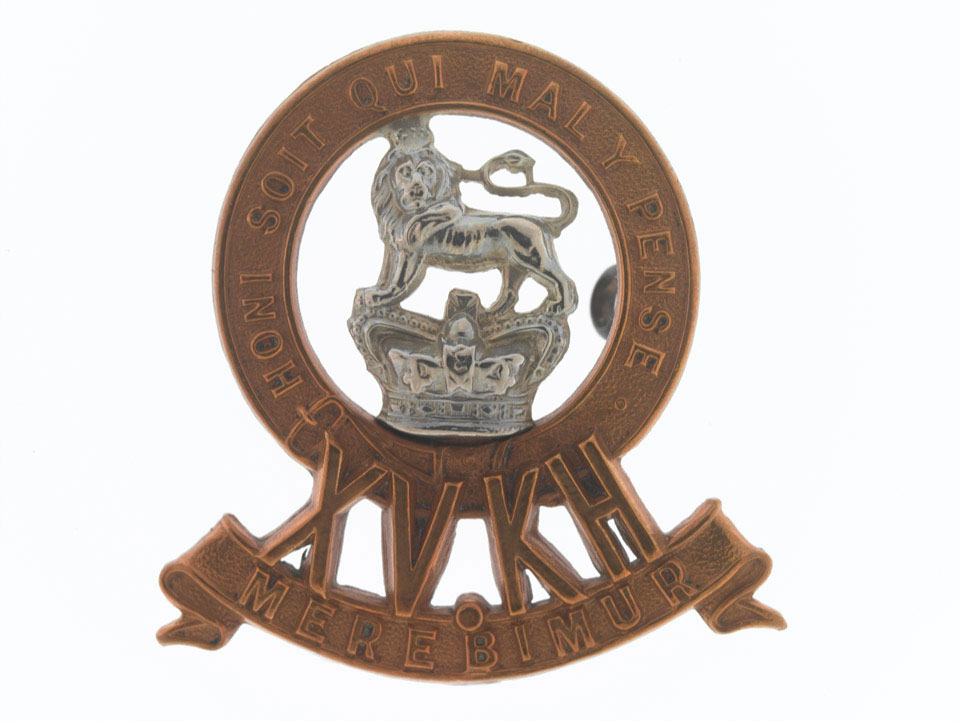
Online Collection
« Prev - 1 of 1 results - Next »
Cap badge, other ranks, 15th (King's) Hussars, 1900 (c)
Brass and white metal badge with lion over crown, within a circlet bearing the motto of the Order of the Garter, 'Honi soit qui mal y pense' (Shame on him who thinks evil of it), above the Regiment's number in Roman numerals and a scroll bearing the Regiment's motto, 'Merebimur' (We Shall Be Worthy).
In March 1759, a royal warrant to raise a cavalry regiment was issued to George Augustus Eliott. The unit Eliott raised was immediately numbered the 15th (or Light) Regiment of Dragoons. The following year, it joined the Allied army in Germany during the Seven Years War (1756-1763). Its first engagement was at Emsdorf in July 1760, where it captured nine enemy colours, suffered two-thirds of the total allied casualties, and won the first ever battle-honour awarded to a British regiment. In 1766, it became the 1st (or The King's Royal) Regiment of Light Dragoons in honour of King George III, before returning to the number 15 in 1769.
The Regiment fought in Flanders during the early stages of the French Revolutionary Wars (1793-1802), including service at Famars and Valenciennes in 1793, and at Villers-en-Cauchies and Willems in 1794. It was converted into a hussar regiment in 1807, before being sent to Spain for the Peninsular War (1808-1814) a year later. It was evacuated from Corunna in January 1809. After a spell of policing duties in the north of England, it returned to the Peninsula in 1813, fighting at Morales and Vitoria that year, and at Orthes and Toulouse in 1814. It also fought at Waterloo in 1815.
In 1819, it provided most of the cavalry sent to keep order at the political demonstration in Manchester which culminated in the Peterloo Massacre. Garrison duties in Ireland and India followed. In 1861, it was retitled the 15th (The King's) Hussars before embarking for further service in India. It fought in the 2nd Afghan War (1878-1880) and then immediately deployed to South Africa to serve in the Transvaal War (1880-1881), fighting at Majuba Hill in February 1881.
The Regiment spent the World War One 1914-1918) on the Western Front, engaged in mounted reconnaissance duties and then dismounted service. Among its many battle honours were Mons (1914), the Marne (1914), Ypres (1914), the Somme (1916), Cambrai (1917), Amiens (1918) and St Quentin Canal (1918).
In 1922, it merged with the 19th Royal Hussars (Queen Alexandra's Own) to form the 15th/19th The King's Royal Hussars.
NAM Accession Number
NAM. 1964-04-85-22
Copyright/Ownership
National Army Museum Copyright
Location
National Army Museum, Study collection
Object URL
https://collection.nam.ac.uk/detail.php?acc=1964-04-85-22

